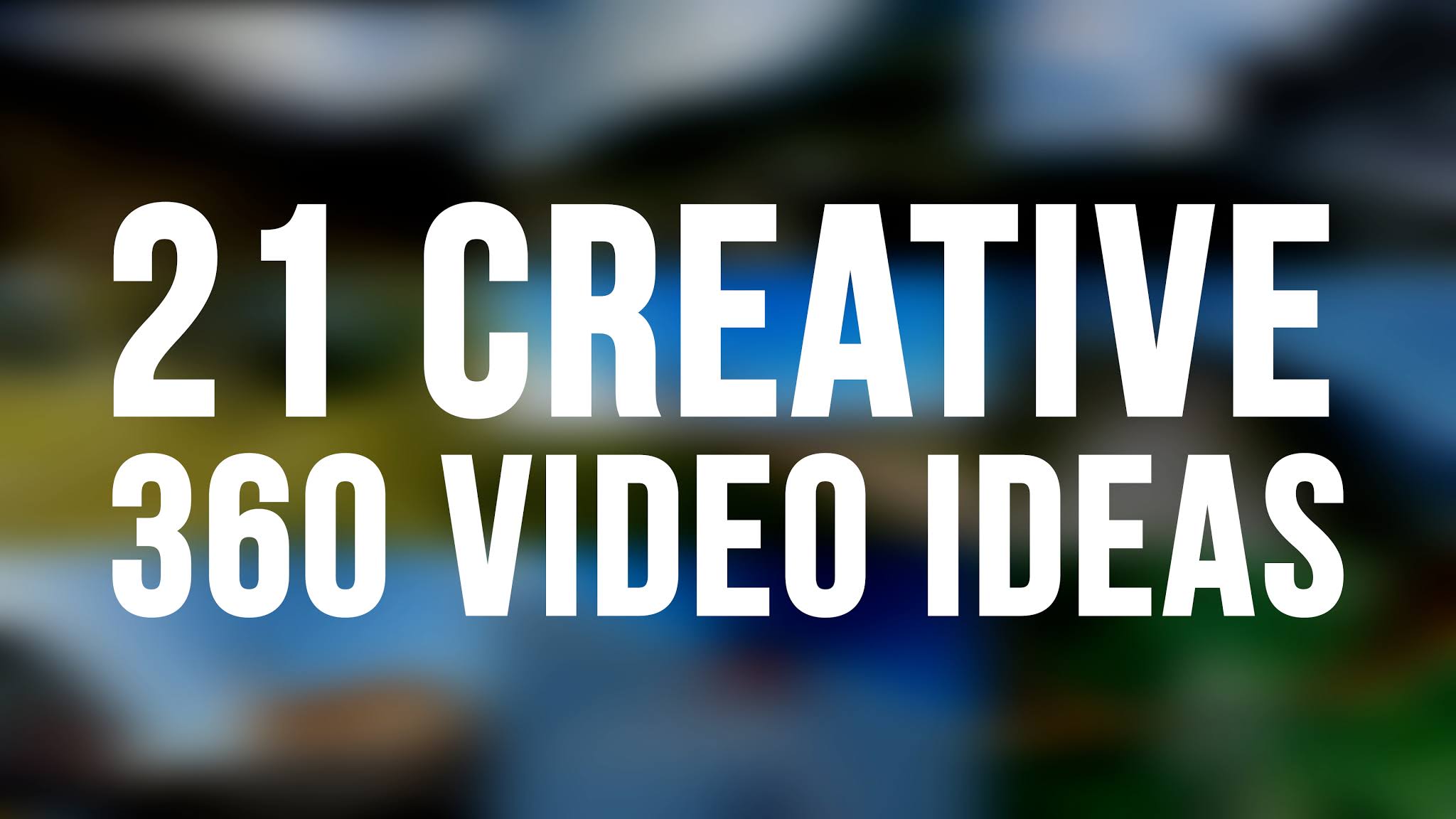Creative video ideas are the cornerstone of any successful video marketing campaign. They have the power to engage audiences, drive conversions, and build brand awareness. In this guide, we will explore the essential elements of creative video ideas and provide you with the tools and techniques you need to create videos that stand out from the crowd.
From brainstorming captivating concepts to crafting compelling narratives, we will cover everything you need to know to create videos that resonate with your target audience and achieve your marketing goals.
Video Concept Brainstorming
The foundation of any successful video lies in its concept. To craft captivating and engaging videos that resonate with your target audience, it’s essential to engage in a thorough brainstorming process.
Identify Target Audience
Understanding your target audience is paramount. Consider their demographics, interests, pain points, and motivations. This knowledge will guide your video’s tone, style, and message, ensuring it aligns with their preferences and aspirations.
Research Current Trends
Stay abreast of the latest video trends and popular content. Explore platforms like YouTube, TikTok, and Instagram to observe what’s trending and what’s resonating with audiences. This research will provide valuable insights into what kind of videos are performing well and what topics are capturing attention.
Storytelling and Narrative

Craft compelling stories that resonate with viewers by using engaging dialogue, creating memorable characters, and utilizing symbolism and foreshadowing. Develop clear and concise storylines with a strong central conflict and a clear structure. Utilize emotional storytelling techniques to evoke strong emotions, enhance the emotional impact, and keep viewers engaged.
Craft Compelling Stories
- Use engaging dialogue to drive the plot and reveal character motivations.
- Create memorable and relatable characters with complex backstories and motivations.
- Utilize symbolism and foreshadowing to enhance the narrative depth.
Develop Clear and Concise Storylines
Establish a strong central conflict that drives the story forward. Use a clear structure with a beginning, rising action, climax, falling action, and resolution. Avoid unnecessary subplots or confusing plot twists.
Utilize Emotional Storytelling Techniques
- Evoke strong emotions in viewers through vivid imagery, powerful dialogue, and compelling character arcs.
- Use music and sound effects to enhance the emotional impact.
- Incorporate elements of surprise and suspense to keep viewers engaged.
Visuals and Aesthetics
Creating visually stunning videos is key to captivating attention and leaving a lasting impression on viewers. Experiment with different camera angles, lighting, and composition to create visually appealing shots. Color grading and visual effects can also enhance the impact of your videos and make them more memorable.
Compelling Video Scripts
A well-written video script is essential for engaging viewers and keeping them interested throughout the video. Your script should be clear, concise, and engaging, and it should flow smoothly from one scene to the next.
Visually Appealing Thumbnails
Your video thumbnail is the first thing viewers will see, so it’s important to make it visually appealing and attention-grabbing. Use high-quality images, eye-catching colors, and clear text to create a thumbnail that will make people want to click on your video.
Motion Graphics and Animation

Incorporate motion graphics and animation to enhance storytelling and create visually engaging content. Design visually appealing characters, objects, and environments, and animate elements to add movement and dynamism.
Incorporate Motion Graphics and Animation
- Use motion graphics to create animated titles, transitions, and other visual elements.
- Incorporate animation to bring characters, objects, and environments to life.
- Use animation to create a sense of movement and dynamism.
Design Visually Appealing Characters, Objects, and Environments
Create visually appealing characters, objects, and environments that are consistent with the overall style of the video. Consider the following:
- Character design: Create characters that are visually appealing, memorable, and relatable.
- Object design: Design objects that are visually interesting and functional.
- Environment design: Create environments that are visually appealing and support the story.
Animate Elements to Add Movement and Dynamism
Animate elements to add movement and dynamism to the video. Consider the following:
- Timing: Use timing to control the speed and flow of the animation.
- Easing: Use easing to create smooth and natural movement.
- Keyframing: Use keyframing to create complex animations.
Music and Sound Design

Music and sound design are crucial elements in creating captivating videos. They can evoke emotions, set the tone, and enhance the storytelling. Here’s how to approach music and sound design effectively:
Music Selection
Choose music that aligns with the overall mood and message of your video. Consider the tempo, instrumentation, volume, and lyrics to create the desired atmosphere.
Sound Effects
Sound effects can add realism, immersion, and cues to your video. Time them precisely, adjust their volume, and layer them effectively to enhance the storytelling.
Voiceover
If you’re using voiceover, ensure it’s clear, engaging, and matches the pace of your video. Consider the tone, pacing, and volume to convey information effectively.
Video Editing and Post-Production
Video editing is crucial for crafting a polished and captivating video. It involves assembling, refining, and enhancing raw footage to create a cohesive and engaging narrative.
Edit Footage
- Trim unnecessary footage and remove distractions.
- Arrange clips logically to maintain a clear flow.
- Use fades, wipes, and other transitions to create smooth connections.
Enhance Visual Appeal
- Adjust color balance, contrast, and saturation to optimize visuals.
- Apply filters, effects, and motion graphics to enhance aesthetics.
- Add text overlays, graphics, and animations to convey information and engage viewers.
Optimize for Different Platforms
- Export videos in appropriate formats and resolutions for various platforms.
- Consider platform-specific guidelines for video length, aspect ratio, and file size.
- Optimize videos for mobile devices by ensuring they load quickly and play smoothly.
Video Optimization and Distribution
To maximize the reach and impact of your videos, it’s essential to optimize them for search engines and social media. This involves using relevant s, creating custom thumbnails, and choosing appropriate tags and descriptions.
Additionally, distributing your videos across multiple channels, including popular video platforms, social media, and your own website, helps increase their visibility and engagement.
Optimize for Search Engines and Social Media
- Research relevant s and incorporate them into video titles, descriptions, and tags.
- Create custom thumbnails that are visually appealing and accurately represent the video content.
Choose Appropriate Tags, Descriptions, and Thumbnails
- Use a variety of tags to categorize videos and make them discoverable.
- Write concise and informative descriptions that provide an overview of the video content.
- Create visually appealing thumbnails that grab attention and entice viewers to click.
Distribute Videos through Multiple Channels
- Publish videos on popular video platforms (e.g., YouTube, Vimeo).
- Share videos on social media platforms (e.g., Facebook, Twitter, Instagram).
- Embed videos on websites and blogs.
- Consider paid advertising campaigns to promote videos to a targeted audience.
Video Analytics and Performance Tracking: Creative Video Ideas

Measuring the success of your videos is crucial for optimizing your content strategy. Video analytics provide valuable insights into how your videos are performing, allowing you to make data-driven decisions to improve their impact.
Use analytics tools to track key metrics such as views, engagement (likes, comments, shares), and conversions (website visits, purchases). Analyze these metrics to understand what’s working well and where there’s room for improvement.
A/B Testing
A/B testing allows you to compare different versions of your videos to see which ones perform better. Test different video formats, thumbnails, and titles to identify the most effective combinations.
Video Marketing and Promotion

Developing a comprehensive video marketing strategy is essential for promoting your videos effectively. By leveraging multiple channels, collaborating with influencers, and optimizing for visibility, you can maximize the reach and impact of your video content.
Social Media Marketing, Creative video ideas
Utilize social media platforms to share your videos and engage with your audience. Create captivating snippets and teasers to entice viewers to watch the full video on your website or channel.
Email Marketing
Incorporate videos into your email campaigns to capture attention and convey your message in a visually appealing way. Personalize emails with targeted video content based on subscriber preferences.
Paid Advertising
Leverage paid advertising platforms to promote your videos to a wider audience. Use targeted campaigns based on demographics, interests, and behaviors to ensure your videos reach the right people.
Influencer Collaborations
Partner with influencers in your industry to promote your videos. Their credibility and reach can help you tap into new audiences and build trust in your brand.
Industry Partnerships
Collaborate with complementary businesses or organizations to cross-promote your videos. Joint ventures and guest appearances can expose your content to a broader audience.
Video Content Formats

In the realm of video creation, the format you choose plays a pivotal role in capturing the attention of your audience. Understanding the diverse range of video content formats is crucial for tailoring your content to specific platforms and objectives.
From bite-sized social media videos to immersive long-form storytelling and interactive live streams, each format offers unique advantages. Explore the possibilities and choose the format that best aligns with your message and target audience.
Short-Form Videos
Short-form videos, with their concise duration and engaging nature, are ideal for capturing attention on social media platforms like TikTok, Instagram Reels, and YouTube Shorts. Their brevity allows for quick consumption and easy sharing, making them perfect for delivering snappy messages, showcasing products, or sharing behind-the-scenes glimpses.
Long-Form Videos
Long-form videos, on the other hand, provide ample space for in-depth storytelling and detailed explanations. Documentaries, tutorials, webinars, and feature films fall under this category. These videos allow you to delve into complex topics, educate your audience, and create immersive experiences that foster deeper engagement.
Live Streams
Live streams offer a unique opportunity for real-time interaction with your audience. They are ideal for hosting Q&A sessions, product demos, live performances, or behind-the-scenes events. Live streams create a sense of immediacy and foster a strong connection with your viewers, allowing you to engage with them in real time.
Looking for some creative video ideas? If you’re struggling to come up with something unique, you might want to check out teahouse creative studios. They have a team of experienced video producers who can help you create high-quality videos that will capture your audience’s attention.
And with their affordable prices, you can get the video you need without breaking the bank. So if you’re ready to take your video marketing to the next level, contact teahouse creative studios today.
Video Production Techniques

Video production techniques are constantly evolving, with new and innovative methods emerging all the time. By staying up-to-date on the latest techniques, you can create videos that are more engaging, visually appealing, and effective.In this section, we’ll discuss some of the most popular and cutting-edge video production techniques, including the use of green screens, drones, and virtual reality.
We’ll also share some tips and best practices for creating high-quality videos.
Green Screens
Green screens are a powerful tool that allows you to create videos with any background you can imagine. By using a green screen, you can transport your subjects to another location, create special effects, or simply add a splash of color to your videos.There are a few things to keep in mind when using a green screen.
First, you’ll need to make sure that your lighting is even and that there are no shadows on your subject. Second, you’ll need to choose a green screen that is large enough to accommodate your subject and any props or equipment you’ll be using.Once you have your green screen set up, you can use any video editing software to add your desired background.
There are many different types of backgrounds available online, or you can create your own.
Drones
Drones are another great way to add some excitement to your videos. Drones can be used to capture aerial footage, which can give your videos a unique and cinematic look.There are a few things to keep in mind when using a drone.
First, you’ll need to make sure that you’re flying in a safe and legal location. Second, you’ll need to be aware of your surroundings and avoid flying near people or property.Once you have your drone set up, you can use it to capture some amazing footage.
Drones are great for capturing sweeping shots of landscapes, following subjects in motion, or getting a bird’s-eye view of your surroundings.
Virtual Reality
Virtual reality (VR) is a rapidly growing technology that has the potential to revolutionize the way we create and consume video. VR headsets allow users to experience videos in a fully immersive way, as if they were actually inside the scene.There are a few things to keep in mind when creating VR videos.
First, you’ll need to use a 360-degree camera to capture your footage. Second, you’ll need to create your video in a way that is compatible with VR headsets.Once you have your VR video created, you can share it with others using a VR headset or a VR player.
VR videos can be used for a variety of purposes, such as education, training, and entertainment.
Video Storytelling for Different Platforms

Creating compelling video content is crucial, but it’s equally important to tailor your videos for different platforms. Each platform has its unique characteristics, target audience, and consumption patterns.
Understanding these platform-specific nuances will help you optimize your videos for maximum engagement and impact.
Adapt Video Content for Different Platforms
When adapting your video content for different platforms, consider the following:
- Platform-specific formats:YouTube favors horizontal videos, while TikTok and Instagram prioritize vertical or square formats.
- Target audience:Each platform attracts a different demographic. Tailor your content to resonate with the interests and preferences of the platform’s users.
- Consumption patterns:Videos on YouTube are often longer and more in-depth, while TikTok and Instagram videos are typically shorter and more snackable.
Optimize Videos for Vertical or Horizontal Viewing
The orientation of your video can significantly impact its effectiveness. Here’s how to optimize for vertical or horizontal viewing:
- Vertical videos:Ideal for mobile viewing, vertical videos take advantage of the natural orientation of smartphones. Consider using a 9:16 aspect ratio for optimal viewing on TikTok and Instagram.
- Horizontal videos:Suitable for desktop viewing or platforms like YouTube, horizontal videos provide a wider canvas for storytelling. The standard aspect ratio for horizontal videos is 16:9.
Consider Platform-specific Features and Algorithms
Each platform has unique features and algorithms that influence how videos are discovered and promoted. Here’s what to consider:
- YouTube:Leverage s in your titles and descriptions for search optimization. Use annotations, end screens, and custom thumbnails to enhance viewer engagement.
- TikTok:Utilize trending hashtags, participate in challenges, and collaborate with influencers to increase your reach. Short, engaging videos with catchy music and visually appealing content perform well.
- Instagram:Optimize your videos for Instagram Reels and Stories. Use eye-catching visuals, add music, and leverage Instagram’s built-in filters and editing tools to make your videos stand out.
– Generate video ideas tailored to specific industries, such as healthcare, education, and technology

Tailoring video ideas to specific industries is crucial for effective video marketing. Each industry has unique challenges, opportunities, and target audiences that require customized video strategies. This article explores industry-specific video ideas, discussing the nuances of healthcare, education, and technology sectors and providing examples of successful video campaigns.
Healthcare Industry
The healthcare industry presents challenges in conveying complex medical information to patients and building trust. Videos can effectively educate patients, promote healthy lifestyles, and showcase medical advancements.
- Patient Education Videos:Simplifying medical concepts, explaining procedures, and providing post-operative care instructions.
- Health and Wellness Videos:Promoting healthy habits, nutrition, and exercise, targeting a wider audience.
- Medical Research and Innovation Videos:Showcasing cutting-edge medical advancements and research findings to engage both professionals and patients.
Education Industry
The education industry seeks to engage students, promote educational institutions, and facilitate remote learning. Videos can enhance learning experiences, provide virtual tours, and offer professional development opportunities.
- Educational Videos:Creating engaging and interactive lessons, supplementing textbooks, and providing visual aids for complex concepts.
- Virtual Campus Tours:Offering immersive experiences of educational institutions, showcasing facilities, and providing a glimpse of campus life.
- Teacher Training Videos:Providing professional development for educators, covering teaching methodologies, classroom management, and technology integration.
Technology Industry
The technology industry focuses on showcasing innovation, explaining complex products, and attracting tech-savvy audiences. Videos can demonstrate product capabilities, provide tutorials, and engage potential customers.
- Product Demo Videos:Visually demonstrating the features and benefits of technology products, highlighting their value proposition.
- Explainer Videos:Simplifying technical concepts, explaining software functionality, and educating viewers about industry trends.
- Thought Leadership Videos:Positioning industry experts as thought leaders, sharing insights, and driving engagement through valuable content.
| Healthcare | Education | Technology | |
|---|---|---|---|
| Target Audience | Patients, healthcare professionals, caregivers | Students, educators, parents | Tech-savvy consumers, businesses, industry professionals |
| Messaging | Health and wellness, medical information, patient education | Educational content, campus life, professional development | Product features, technical concepts, thought leadership |
| Distribution Channels | Hospital websites, patient portals, social media | Educational platforms, school websites, YouTube | Company websites, industry events, online marketplaces |
Tips for Creating Effective Videos for Each Industry
Tailoring videos to each industry requires specific considerations:
- Healthcare:Focus on empathy, trust-building, and clear communication of medical information.
- Education:Prioritize engagement, interactivity, and alignment with educational standards.
- Technology:Emphasize innovation, product demonstration, and technical expertise.
Resources for Creating Industry-Specific Videos
- Healthcare:MedPage Today, Healthline Media, STAT
- Education:Edutopia, Common Sense Media, PBS LearningMedia
- Technology:TechCrunch, The Verge, Wired
Case Studies and Success Stories
Examining successful video marketing campaigns through case studies provides valuable insights into effective strategies, tactics, and outcomes. By analyzing these campaigns, we can identify key takeaways and lessons learned that can guide our own video marketing efforts.
Case studies typically involve a detailed breakdown of the campaign’s objectives, target audience, video content, distribution channels, and measurement metrics. They also highlight unique challenges faced during the campaign and how they were overcome.
- Present a case study of a successful video marketing campaign in the healthcare industry.
- Analyze the campaign’s objectives, target audience, video content, distribution channels, and measurement metrics.
- Identify key takeaways and lessons learned from the campaign.
- Highlight the unique challenges faced during the campaign and how they were overcome.
FAQ Summary
What are the key elements of a creative video idea?
The key elements of a creative video idea include a strong concept, a compelling narrative, visually stunning visuals, and engaging audio.
How can I brainstorm creative video ideas?
To brainstorm creative video ideas, start by identifying your target audience and their interests. Then, research current trends and popular content to see what is resonating with viewers. Finally, let your creativity flow and experiment with different ideas.
What are some tips for creating visually stunning videos?
To create visually stunning videos, use high-quality footage, experiment with different camera angles and lighting, and use color grading and visual effects to enhance the impact.